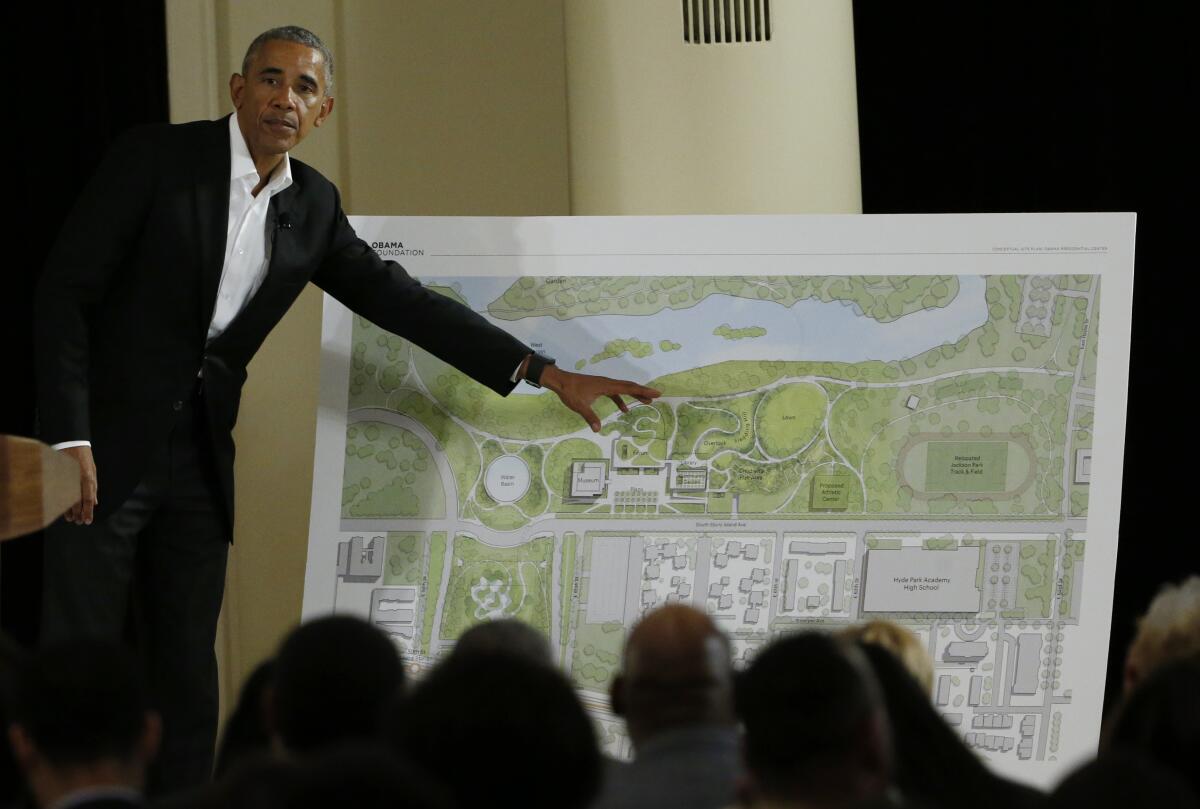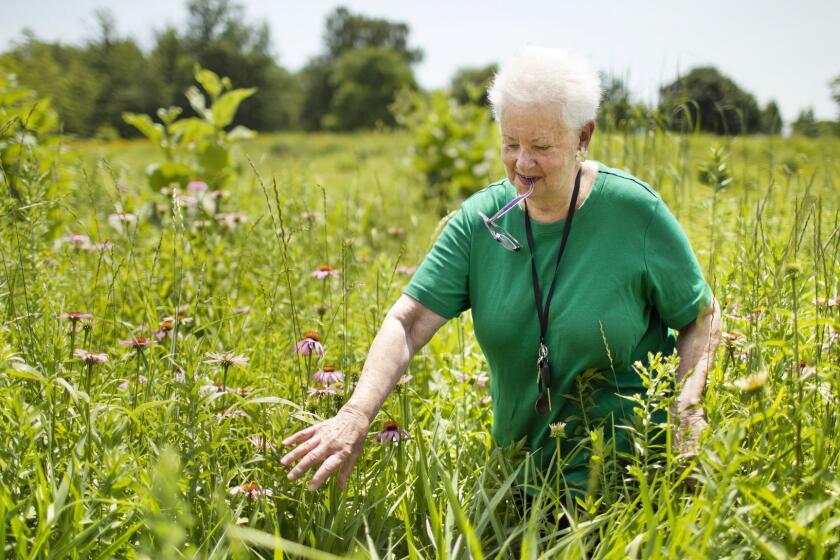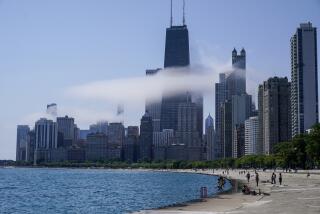Obamas break ground on presidential center after years of controversy

- Share via
CHICAGO — After five years of legal battles, gentrification concerns and a federal review, former President Obama and his wife, Michelle, dug shovels into the ground Tuesday during a celebratory groundbreaking on their legacy project in a lakefront Chicago park.
Construction on the site along Lake Michigan, near the Obama family home and where the former president started his political career on Chicago’s South Side, officially began last month. Work on the Obama Presidential Center is expected to take about five years.
Standing near an excavator and other heavy equipment, President Obama described how the city’s South Side shaped him, first as a community organizer, then as a husband, father and elected official. He said that the center was one way of giving back and that he hoped it would bring an economic boost to the area as well as inspire a future generation of leaders.
“We want this center to be more than a static museum or a source of archival research. It won’t just be a collection of campaign memorabilia or Michelle’s ballgowns, although I know everybody will come see those,” he joked. “It won’t just be an exercise in nostalgia or looking backwards. We want to look forward.”
Chicago Mayor Lori Lightfoot, Illinois Gov. J.B. Pritzker and several city aldermen were among the few people allowed at the event, which was streamed online to limit crowds due to the COVID-19 pandemic.
The presidential center, which will sit on 19 acres of the 540-acre Jackson Park, will be unique among presidential libraries.
When Charlotte Adelman was a student at the University of Chicago, the nearby parks became a refuge for her, sprawling expanses of green where she could escape the concrete urban landscape.
Obama’s presidential papers will be available in digital form. The sprawling campus will include a museum, public library branch, athletic center, test kitchen and children’s play area.
The initial cost of the center was projected at $500 million, but documents released by the Obama Foundation last month showed that it has grown to roughly $830 million. Funds are being raised through private donations.
Organizers estimate about 750,000 visitors will come to the center each year.
Progress on the center has been delayed by lawsuits and a mandatory federal review because of its location in Jackson Park, which is on the National Register of Historic Places. At the same time, fears about displacing Black residents in the area developed into a years-long battle resulting in city-approved neighborhood protections, including safeguards for affordable housing.
President Barack Obama’s legacy is unusual for its complexity.
Some neighborhood activists said Tuesday that they were already seeing rising housing prices and would keep pushing for more protections in surrounding areas. Environmental advocates have also objected to the location and the loss of green space. During the groundbreaking event, a plane pulled an aerial banner overhead reading, “STOP CUTTING DOWN TREES. MOVE OPC.”
Obama, who didn’t take questions during the event, has said over the years that the center would bring new jobs to the area and that new trees would be planted on the campus.
Obama chose Chicago over several other cities including Honolulu, where he spent his early years. The former president has said he hopes the center will help jump-start the economic engine of the city’s South Side.
It’s a part of the city that has special significance for the Obamas. The center is near the University of Chicago, where Obama taught law and where the Obamas got married and raised their two daughters. The former first lady also grew up on the South Side.
“This city, this neighborhood courses through my veins and defines me at my very core,” Michelle Obama said at the event. “This substantial investment in the South Side will help make the neighborhood where we call home a destination for the entire world.”
More to Read
Sign up for Essential California
The most important California stories and recommendations in your inbox every morning.
You may occasionally receive promotional content from the Los Angeles Times.











